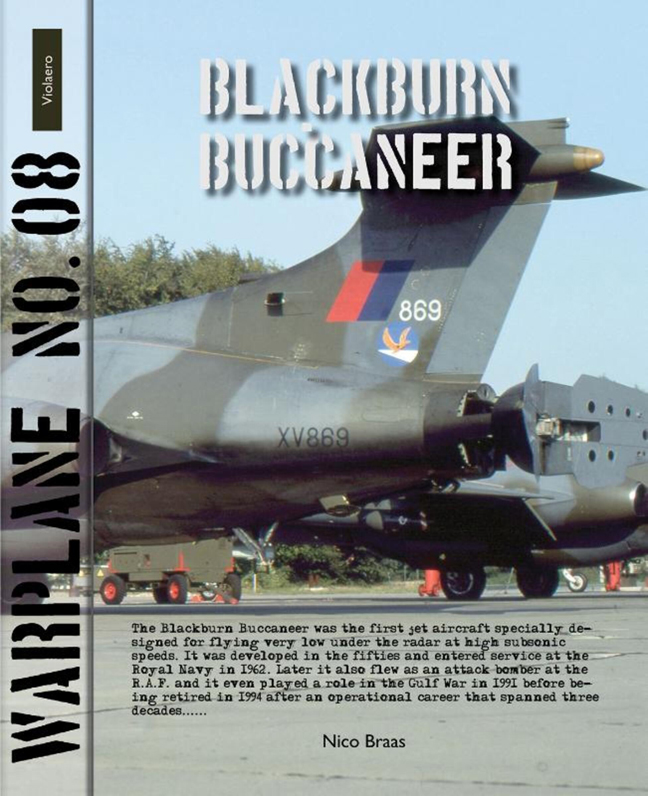Book contents
- Frontmatter
- Introduction
- In service at the royal navy
- Buccaneer Photo-Recce crate
- South African nuclear bombers
- In service at the R.A.F. … at last
- Martel Missile (AJ.168) (AS.37)
- WE177 nuclear bomb
- The Buccaneer goes to war
- Museum piece
- Final phase out and retirement
- Sub-versions S.2:
- Accidents and Incidents
- Survivors
- Technical Description
- References
- Credits
In service at the R.A.F. … at last
Published online by Cambridge University Press: 20 February 2024
- Frontmatter
- Introduction
- In service at the royal navy
- Buccaneer Photo-Recce crate
- South African nuclear bombers
- In service at the R.A.F. … at last
- Martel Missile (AJ.168) (AS.37)
- WE177 nuclear bomb
- The Buccaneer goes to war
- Museum piece
- Final phase out and retirement
- Sub-versions S.2:
- Accidents and Incidents
- Survivors
- Technical Description
- References
- Credits
Summary
When the NA.39 was ordered as a new attack plane for the Royal Navy, a landbased version was also offered to the R.A.F. as a replacement for the Canberra bomber. However, at that time they showed no interest since they had selected the B.A.C. TSR-2. It had Mach 2+ capability and could operate both at low and high altitude. Even when the TSR-2 was cancelled in 1965 the R.A.F. still was not interested since they regarded the General Dynamics F-111K as the best alternative. However, when also plans to acquire the F-111K were cancelled in January 1968 it meant the Canberra still was not replaced! Blackburn/Hawker Siddeley had already earlier submitted a further development of the Buccaneer (Project P.150). It could reach supersonic speeds thanks to a thinner wing and re-heated jet engines. It also had up-dated navigation/attack systems (from the TSR-2) but even after cancellation of the TSR.2 the Blackburn project was not accepted. With the cancellation of the F-111K order, the R.A.F. did not have a suitable modern attack plane!
Reluctantly, an order was placed for 26 Buccaneer S.2B’s for the R.A.F. (XW525- XW550). In addition the R.A.F. agreed to take over a number of Royal Navy S.2’s after some minor modification designating these as the S.2A. The first S.2A delivered was XV350 which made its first flight in this modified form on 11 February 1969. Later on another twenty S.2B’s were ordered for the R.A.F. with another three supplied for weapon trials at R.A.E. Bedford. The last S.2B was delivered in January 1977.
The S.2B could be easily distinguished by a bulge below the fuselage to accommodate an enlarged fuel tank of 1932 l (425 UK gal.) in the bomb bay. Other changes included up-to-date R.A.F. avionics and a strengthened undercarriage. It had a higher all-up weight of 28,123 kg. Although the catapult hold-back was removed the arrester hook and folding wings were retained to avoid additional re-design work. Of course the arrester hook was not used, but the R.A.F. Buccaneers regularly used the wing folding mechanism for efficient parking. The following R.A.F. squadrons were equipped with the Buccaneer:
- No. 12 Squadron (Honington)
- No. 15 Squadron (Laarbruch, Germany)
- No. 16 Squadron (Laarbruch, Germany)
- No. 208 Squadron (Honington and Lossiemouth)
- No. 216 Squadron (Honington and Lossiemouth)
- No. 237 OCU at Lossiemouth/Honington used the S.2A and S.2B for conversion training.
- Type
- Chapter
- Information
- Blackburn Buccaneer , pp. 23 - 28Publisher: Amsterdam University PressPrint publication year: 2014



